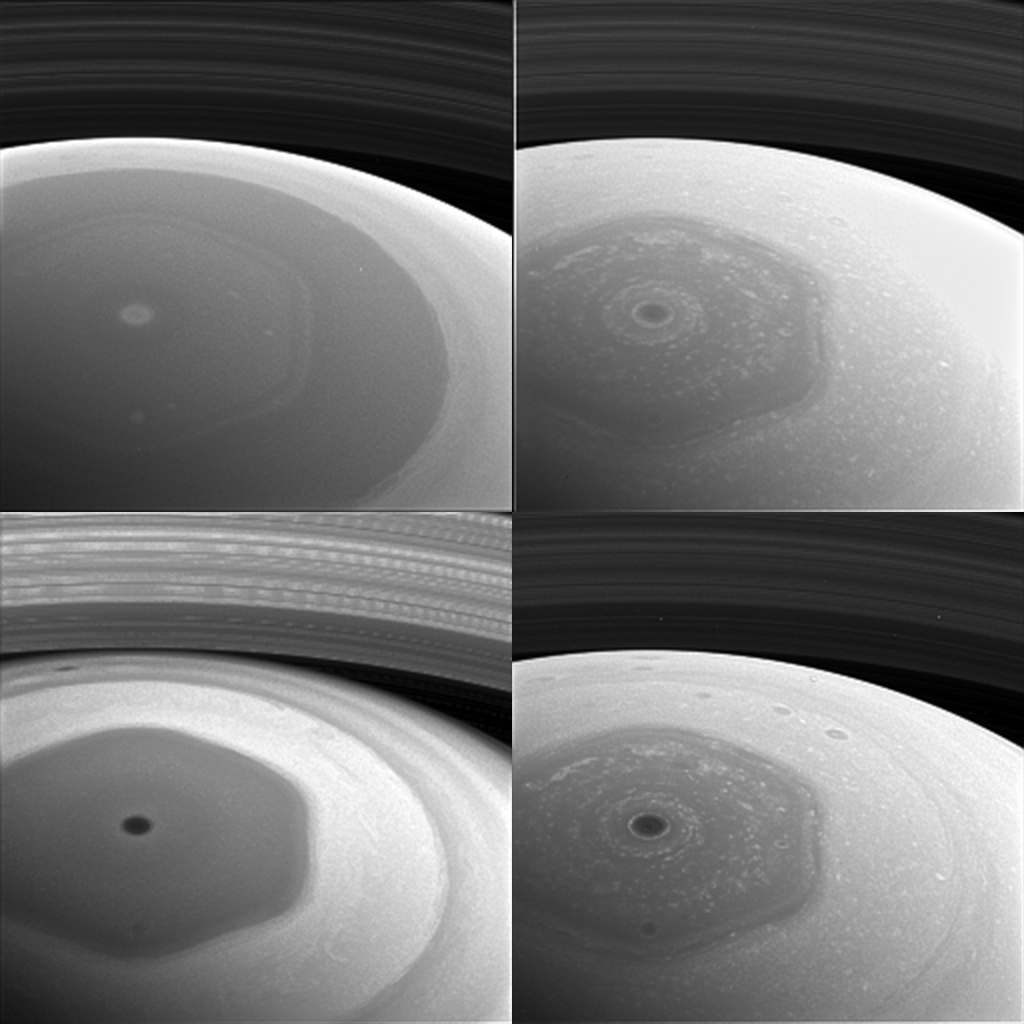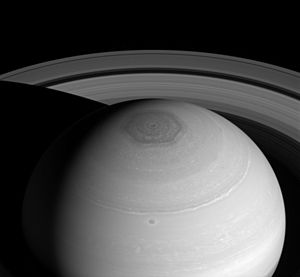NASA’s Cassini spacecraft has sent to Earth its first images of Saturn’s atmosphere since beginning the final phase of its mission. The astonishing images show the hexagon-shaped storm in Saturn’s northern hemisphere.
The images were obtained on Dec 2 and 4, about two days before the Cassini’s first approach to the Saturn’s rings. The Cassini spacecraft wide-angle camera captured the views at a distance of about 400.000 miles (640.000 kilometers) from Saturn. On Dec 11, The Cassini will pass by the rings’ outer edges once again. The future images will show closest-ever views of the outer rings and its small moons.

This collage of images from NASA’s Cassini spacecraft shows Saturn’s northern hemisphere and rings as viewed with four different spectral filters. Each filter is sensitive to different wavelengths of light and reveals clouds and hazes at different altitudes. Credits: NASA/JPL-Caltech/Space Science Institute
“This is it, the beginning of the end of our historic exploration of Saturn. Let these images – and those to come – remind you that we’ve lived a bold and daring adventure around the solar system’s most magnificent planet,” said Carolyn Porco, Cassini imaging team lead at Space Science Institute, Boulder, Colorado.
The spacecraft began the ring-grazing phase of the mission on 30 November. On each of these week-long orbits Cassini will lift high above Saturn’s northern hemisphere and it will dive through the outer edge of Saturn’s rings 20 times.
Cassini has toured the Saturn system since arriving there 2004 and the final phase will come to a dramatic end on Sept. 15, 2017. Cassini will send the last information on Saturn’s surface just before it dives into the planet’s atmosphere.
Mysterious Saturn’s hexagon
The mysterious hexagon-shaped storm on Saturn’s North Pole has been intriguing since its discovery by the Voyager mission in 1981-82. Saturn’s hexagon is a persisting massive hurricane around the north pole of Saturn with an eye about 50 times larger than the average hurricane eye on Earth. It spreads about 30.000 km across with estimated winds of about 320 km per hour. For comparison, Earth has a diameter of less than 13.000 km.
“The hexagon is just a current of air, and weather features out there that share similarities to this are notoriously turbulent and unstable. A hurricane on Earth typically lasts a week, but this has been here for decades – and who knows – maybe centuries”, assumes Andrew Ingersoll from the Cassini Imaging Team.
The scientists have offered about a number of explanations for the hexagon’s origin. Scientists from the Oxford team, based on their laboratory experiments, claim it could be a steep latitudinal gradient in the speed of the atmospheric winds in Saturn’s atmosphere. Other researchers claim that lab studies show vortex streets, a series of spiraling vortices not observed in the planet’s hexagon.
This final phase of Cassini’s mission will give some precious information on Saturn’s atmosphere and will help scientists to understand closely what exactly the hexagon is.



